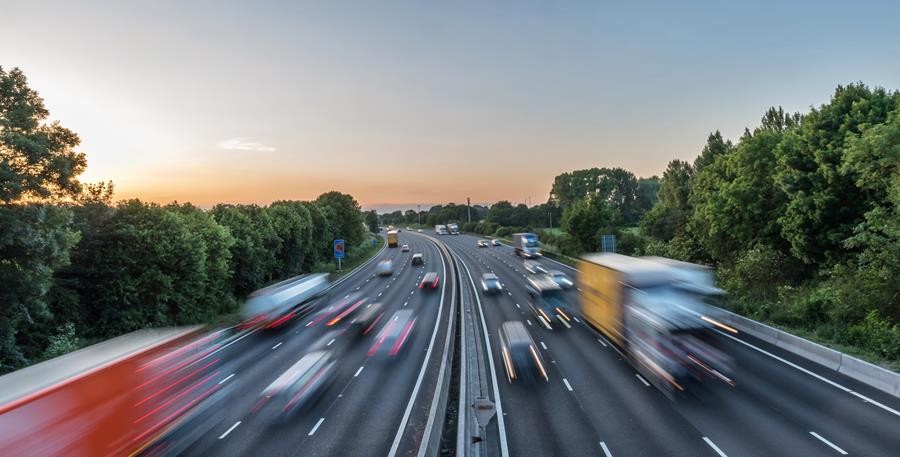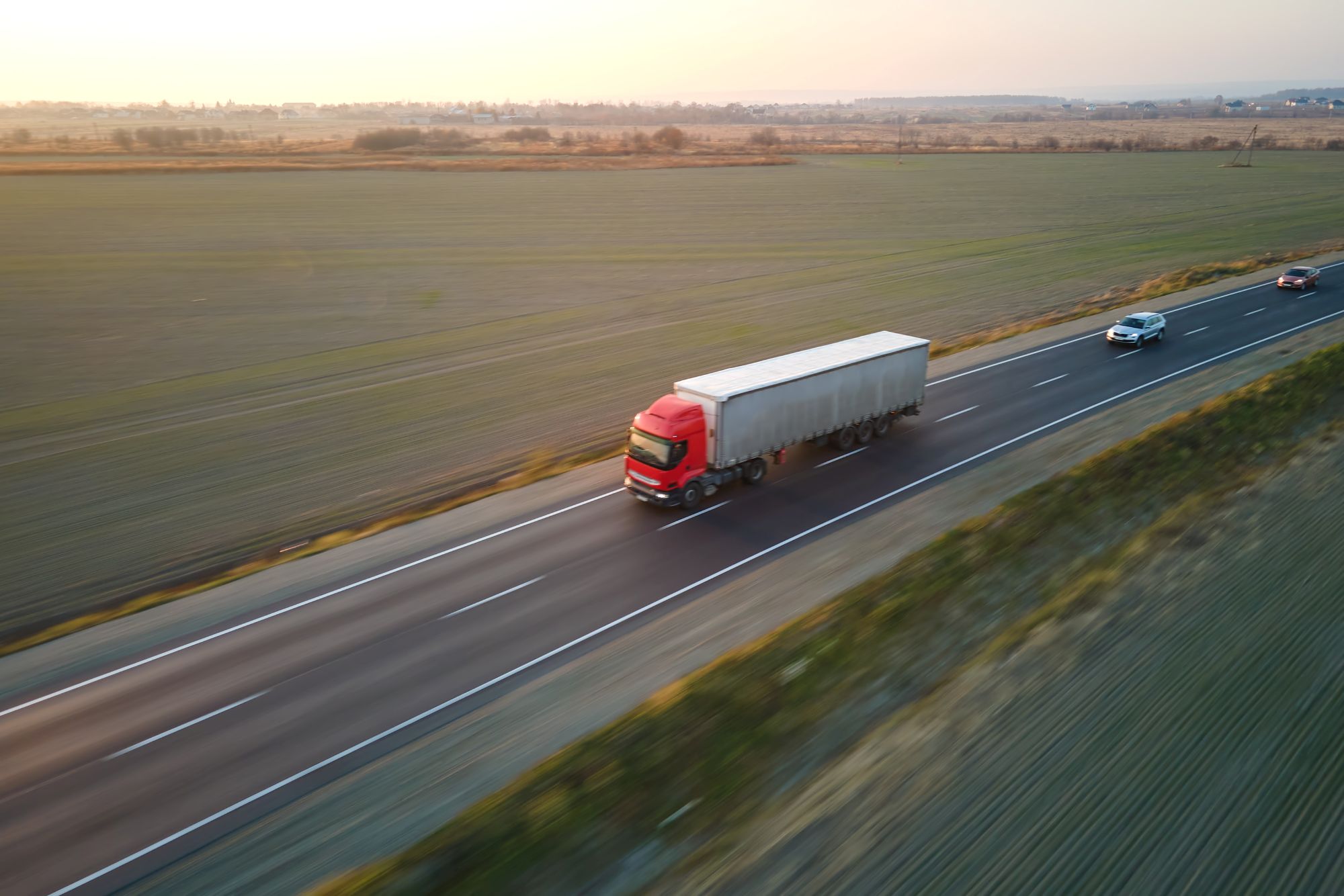
Susie Jones
La strada verso la sostenibilità: La sfida europea delle emissioni nel settore dei trasporti
Creato: 08/08/2024
•
Aggiornato: 08/08/2024
Un rapporto del 2024 di Clean Technica ha rivelato che oltre il 25% delle emissioni del traffico stradale proviene dal settore dei trasporti in Europa, con i veicoli pesanti responsabili dell'85% delle emissioni (autobus e pullman costituiscono il resto).
Al ritmo attuale, il settore dei trasporti da solo rappresenterà quasi la metà delle emissioni di gas serra in Europa nel 2030 - le emissioni dei trasporti europei hanno continuato ad aumentare di oltre un quarto dal 1990. Le emissioni dell'intera economia sono diminuite, ma dal picco del 2007 il settore dei trasporti si è decarbonizzato più di tre volte lentamente rispetto al resto dell'economia.
Qual è la causa dell'aumento delle emissioni di CO2 nell'industria del trasporto?
Con la proliferazione dell'e-commerce e dei servizi di consegna a domicilio, la richiesta di un maggior numero di camion su strada è aumentata in modo significativo. Di conseguenza, l'aumento della domanda ha portato a un incremento delle emissioni di CO2 nel settore del trasporto.
Un rapporto di Clean Technica sul tonnellaggio del trasporto nazionale di merci tra le diverse modalità (strada, ferrovia e acqua) ha rivelato che il trasporto su strada è più dominante in Europa rispetto alla ferrovia e all'acqua rispetto ad altre aree geografiche (Stati Uniti e India). Sebbene la Cina sia più dipendente dal trasporto su strada, il rapporto ha rivelato che il Paese opera con circa 600.000 camion elettrici per la consegna delle merci.

Quali sono i piani in atto in Europa per ridurre le emissioni di CO2?
Il Parlamento europeo ha adottato la [Legge europea sul clima] (https://climate.ec.europa.eu/eu-action/european-climate-law_en#:~:text=The%20European%20Climate%20Law%20writes,2030%2C%20compared%20to%201990%20levels.) per affrontare l'aumento delle emissioni di CO2. Nell'ambito di questa legge, l'obiettivo dell'UE di ridurre le emissioni nette di gas serra entro il 2030 è stato aumentato ad almeno il 55%, rendendo la neutralità climatica entro il 2050 legalmente vincolante.
Nel maggio 2024, i Paesi dell'UE hanno approvato una legge per ridurre le emissioni di CO2 dei camion. La nuova legge richiederà che i nuovi veicoli pesanti venduti nell'UE a partire dal 2040 siano privi di emissioni, imponendo al contempo una riduzione del 90% delle emissioni di CO2 dei nuovi mezzi pesanti entro lo stesso anno. I produttori dovranno vendere una grande quantità di veicoli pesanti completamente privi di emissioni di CO2 - ad esempio, veicoli elettrici e a idrogeno - per compensare le vendite rimanenti di veicoli che emettono CO.
Quali azioni possono intraprendere i gestori di flotte per ridurre le emissioni di CO2?
I gestori di flotte possono adottare misure per ridurre le proprie emissioni di CO2:
Le frenate brusche, le accelerazioni rapide e il funzionamento al minimo possono aumentare il consumo di carburante e le emissioni di gas serra - Sebbene il monitoraggio del comportamento dei conducenti possa essere impegnativo, la tecnologia AI può fornire un feedback continuo ai conducenti e ai gestori delle flotte. Per saperne di più su come l'IA può avere un impatto positivo sulla sostenibilità nel settore dei trasporti.
Le flotte con veicoli più vecchi possono passare all'olio vegetale idrotrattato (HVO), all'idrogeno o ai mezzi pesanti a trazione elettrica per ridurre significativamente le emissioni. Tuttavia, i gestori delle flotte devono considerare la distanza percorribile dai veicoli ad alimentazione alternativa e le implicazioni in termini di costi.
Conto SNAP consente ai gestori di flotte di ridurre il chilometraggio delle deviazioni: con oltre 600 partner di servizio disponibili per i clienti del Conto SNAP, i gestori di flotte possono pianificare le soste notturne per i loro conducenti durante il percorso.
Esiste l'infrastruttura per ricaricare i mezzi pesanti elettrici?
Secondo uno studio PwC, entro il 2030 un terzo dei camion in Europa sarà elettrico. Poiché le società di flotta si stanno muovendo verso l'elettrificazione, gli autogrill in Europa devono essere in grado di soddisfare la domanda di stazioni di ricarica elettrica.
La fornitura dell'infrastruttura avrà un costo per molte aree di sosta e stazioni di servizio. Tuttavia, quelle che già ospitano i caricabatterie per autoveicoli elettrici sono nella posizione ideale per trarre vantaggio dalle future ondate di camion elettrici. Entro il 2030, le stazioni di ricarica pubbliche in Europa saliranno a oltre 3.600 - L'UE ha presentato una legge ambiziosa per la ricarica con il regolamento sulle infrastrutture per i carburanti alternativi (AFIR). L'AFIR prevede di dotare la rete stradale principale di stazioni di ricarica ogni 60 km, fornendo energia di ricarica e capacità di idrogeno sufficienti a far sì che il 9% delle flotte di camion e pullman sia a emissioni zero entro il 2030.
Qual è il Paese europeo con più emissioni di CO2?
Nel 2021, Germania, Francia e Italia erano responsabili delle più alte emissioni complessive di gas a effetto serra (GHG), con valori compresi tra 375.000 e 740.000 ktonnellate di CO2. Tuttavia, i Paesi con una popolazione più numerosa producono un maggior numero di emissioni di gas serra, per cui la visione delle emissioni complessive di gas serra fornisce un'immagine distorta.
Se si guarda a una visione imparziale delle emissioni, la prospettiva è diversa: Lussemburgo, Irlanda e Repubblica Ceca hanno prodotto le emissioni pro capite più elevate dell'UE nel 2021.
Qual è il modo più ecologico di trasportare le merci?
Il trasporto di merci su rotaia è uno dei modi di trasporto più puliti, ma offre anche altri vantaggi:
Riduce la congestione stradale, contribuendo a migliorare la qualità dell'aria.
La ferrovia offre un modo più rapido di trasportare le merci ed elimina gli ostacoli al traffico pesante.
I camion a carburante alternativo sono un altro modo ecologico di trasportare le merci. L'olio vegetale idrotrattato (HVO) è in grado di ridurre immediatamente fino al 90% delle emissioni a effetto serra rispetto al gasolio standard lungo tutto il ciclo di vita del prodotto. Certas Energy HVO è alla base del passaggio a un'alternativa più pulita, aiutando le aziende a raggiungere i loro obiettivi di sostenibilità e a compiere passi significativi verso un futuro a zero emissioni.



